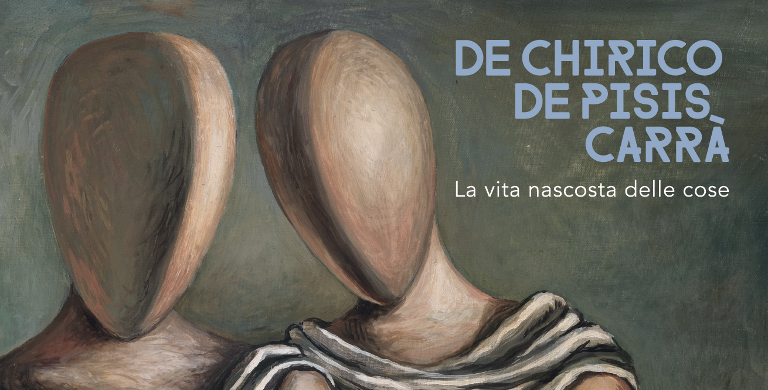In Pavia, Caravaggesque works dialogue with De Pisis, De Chirico and Carrà
In Pavia, for the spring exhibition season, the Culture, Education, Youth Policy Department of the City of Pavia is organizing the exhibition De Chirico, De Pisis, Carrà. The Hidden Life of Things, at the Musei Civici del Castello Visconteo from April 19 to July 28, 2019. Curated by Antonio D’Amico, with the scientific collaboration of Elena Pontiggia and Maria Silvia Proni, the exhibition offers an itinerary in which a group of superb Neapolitan still lifes from the 17th century, executed with a lenticular adherence to reality by Caravaggesque artists(Paolo Porpora, Giovanni Battista and Giuseppe Recco, Giovanni Battista Ruoppolo), dialogues with important works by Filippo de Pisis, with a rare nucleus of Vite silenti by Giorgio De Chirico and with some meditative still lifes by Carlo Carrà, painters who in the twentieth century gave rise to Metaphysics, attributing to the objects portrayed a symbolic value and thus allowing the hidden life of things to emerge.
The exhibition (which consists of an itinerary of sixty works, from prestigious private Italian and foreign collections) also allows for the simultaneous development of an evocative and in some ways unforeseen dialogue with the spaces of the 14th-century castle that hosts it and, from there, with the entire city.
“De Chirico, De Pisis and Carrà,” explains curator Antonio D’Amico, “entrust thoughts and emotions to colors to create compositions that become diaries charged with hidden meanings, linked to life and the poetics of small things, animating on canvas the language of Metaphysics that is made of simplicity, clarity, sonority and palpitation, as De Pisis writes and as will be seen in the works on display, some of which have never been exhibited before. With Metaphysics, artists give shape to the memory of places and objects, discovering that everything possesses a symbolic implication, an emotional psychology and a precise story to show that often remains secret and intimate. Still lifes are true pictorial meditations, they are silent, still lives, as Giorgio de Chirico calls them, which contain ideas, thoughts and, above all, the hidden essence of nature.”
The exhibition (an opportunity to also admire Gli Archeologi in which De Chirico adopts a small temple leaning against a rocky boulder, taken from a painting that belonged to De Pisis, thus sealing their friendship through pictorial language as well) intends to show how the still life genre in Italy is enlivened in the twentieth century with new impulses and vigorous symbolic implications.
For all information you can visit www.vivipavia.it, organ of the municipality.
Source: communiqué
 |
| In Pavia, Caravaggesque works dialogue with De Pisis, De Chirico and Carrà |
Warning: the translation into English of the original Italian article was created using automatic tools. We undertake to review all articles, but we do not guarantee the total absence of inaccuracies in the translation due to the program. You can find the original by clicking on the ITA button. If you find any mistake,please contact us.





























